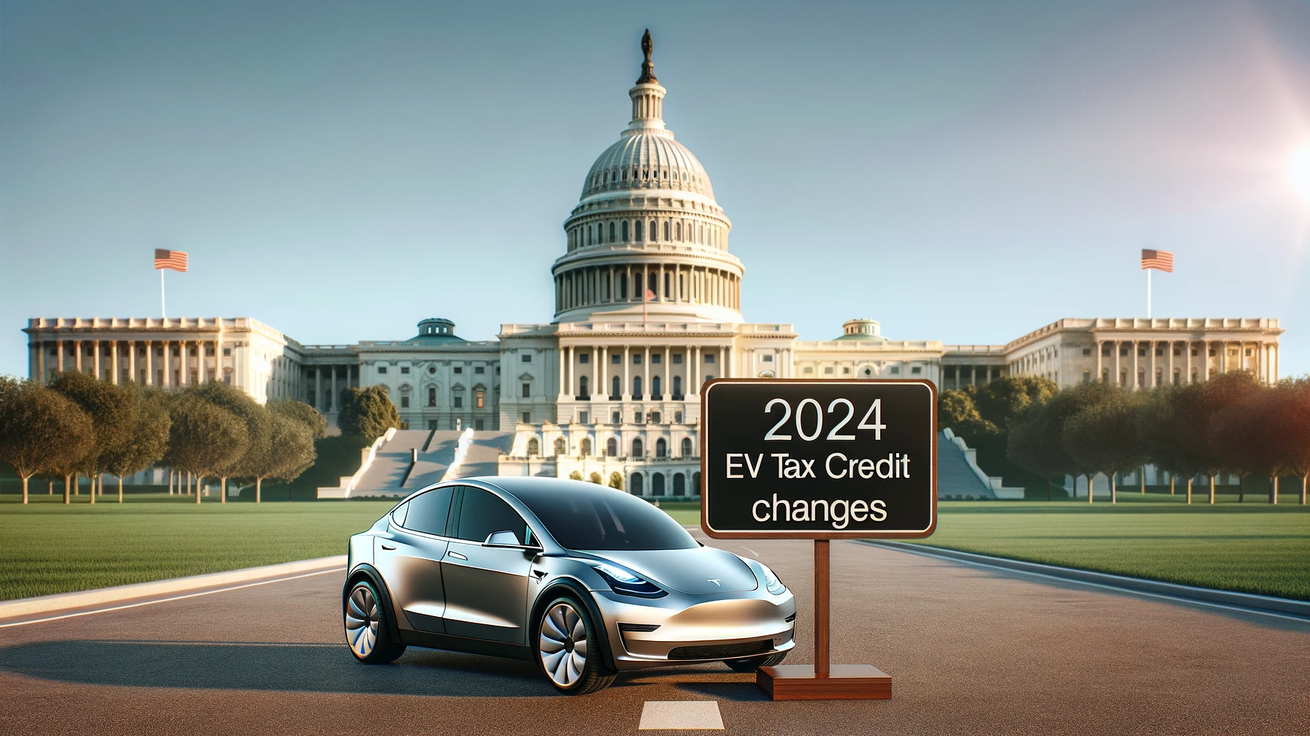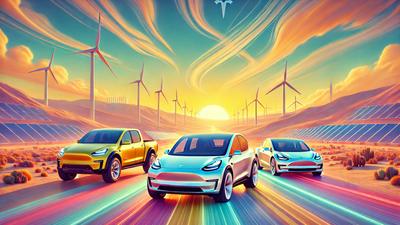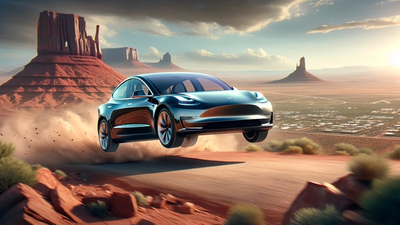Well, it’s 2024, the changes to the federal EV tax credit have officially taken effect, and it’s a bit of a mixed bag.
On the one hand, the (up to) $7,500 tax credit is now available right away at the point of sale, eliminating the wait time and allowing drivers to apply their savings directly to the purchase of their vehicle at the dealership—which is great for consumers. In fact, it’s what EV Life has been doing for our customers for years. We pre-qualify eligible drivers for their incentives and immediately apply their savings to their loans, lowering monthly payments right away.
On the other hand, new eligibility requirements have also taken effect, and some EVs didn’t make the cut. The list of electric vehicles that qualify for the federal tax credit shrunk from 35 to 14, according to the US Department of Energy. This includes some of the most popular EVs on the market, like the Nissan Leaf and certain trims of the Tesla Model 3, as well as long-awaited models that were initially slated to qualify but now don’t, like the Tesla Cybertruck. However, some automakers have indicated that they will make the necessary changes to their pricing, sourcing, or manufacturing in the coming year to place some models back on the list.
In this article, we’ll examine some of the new changes to the federal clean vehicle tax credit, how they are affecting vehicle and driver eligibility, and what that means for drivers looking to purchase their first electric vehicle.
New Changes in 2024: Instant Rebates
Starting in January 2024, electric vehicle purchasers will no longer need to wait until the subsequent tax season to receive their credit. Instead, drivers will have the option to apply the tax credit at the time of the vehicle purchase in the form of a rebate that essentially acts as a discount on the dealership’s sticker price. Here’s how it works:
These new guidelines simplify the process for drivers, providing an immediate financial incentive at the point of sale and making dealers, not individuals, collect the tax credit from the IRS.
Which Electric Vehicles Still Qualify for the Tax Credit?
When the new requirements took effect on January 1, 2024, the list of eligible vehicles got quite a bit shorter. Here is a list of vehicles that still make the cut:
Vehicle | Tax Credit Amount | Additional Incentives |
|---|
| $7,500 | |
| $7,500 | |
| $7,500 | |
| $7,500 | |
| $3,750 | |
| $3,750 | |
| $3,750 | |
| $3,750 | |
| $3,750 | |
| $7,500 | |
| $7,500 | |
| $7,500 | |
| $7,500 | |
| $7,500 | |
| $7,500 | |
Source: <a href="https://fueleconomy.gov/feg/tax2023.shtml" target="_blank">Fueleconomy.gov</a> updated 1/24/2024
The list of eligible vehicles will change throughout the year as automakers make sourcing and manufacturing adjustments to comply with new regulations. Nissan, Volkswagen, Tesla, and other automakers have already indicated that they intend to make the necessary changes to get certain models back on the list before the end of 2024.
It’s also important to note that these eligibility requirements apply to the year that the vehicle is “put into service,” not when it is purchased. So, if someone ordered a Volkswagen ID.4 in 2023 when it was eligible but received it in 2024 when it was not, they are not able to collect the tax credit.
Determining Income Eligibility
Although drivers no longer have to wait until they file their taxes to get the clean vehicle tax credit, they must still attest to their income eligibility for the credit. Those requirements, outlined by the IRS, have not changed.
Income limits for new vehicles:
- Single: $150,000
- Head of household: $225,000
- Married (filing jointly): $300,000
You can use the previous year’s income to determine eligibility. However, according to the IRS, “if a buyer transfers a credit but exceeds modified adjusted gross income limitations in both the year the vehicle is placed in service and the prior year, the buyer must repay to the IRS the full amount of any transferred credit when they file their tax return.”
That means if your income is above the specified limits, you will have to pay back the credit when you file your taxes the following year.
If you aren’t sure you qualify, you can use EV Life’s new Verify EV Tax Credit tool to verify your tax credit eligibility.
Your Tax Liability No Longer Matters
Another benefit to the new changes is that rebates are no longer limited by tax liability. Under the old rules, drivers would need a tax liability of at least $7,500 in order to apply their full tax credit, as the credit could only be applied to offset taxes already owed.
Now, according to the IRS, even drivers with no tax liability can still receive the credit in the form of a discount when they make their purchase.
Determining Vehicle Eligibility
The short story:
Tax credit eligibility is complex. Read on or just use EV Life’s EV Savings Calculator to tell you what you and your vehicle qualify for.
The longer story:
To be eligible for the clean vehicle tax credit, all-electric or plug-in hybrid vehicles must meet battery size and vehicle weight requirements and must be:
- Assembled in North America
- Priced under $55,000 for cars and $80,000 for SUVs, vans, and trucks
- Contain no battery components or critical minerals manufactured or processed in “foreign entities of concern,” defined by the Treasury Department to include China, Russia, North Korea, and Iran.
In addition, battery sourcing requirements can also affect a vehicle’s eligibility. The full $7,500 tax credit is split into two parts, each worth $3,750. Vehicles can qualify for none, both, or either of these credits.
- $3,750 of the credit applies to the raw materials inside batteries, requiring a certain percentage of critical minerals to be mined or processed in the U.S. or a trade partner.
- The other $3,750 of the credit applies to battery manufacturing, requiring a certain percentage of the battery's components to be manufactured or assembled in North America.
These additional requirements are meant to encourage the auto industry to rely less on foreign countries like China and more on domestic sources for these components, promoting local manufacturing and supply chain security. Each year, the percentages for these components go up, making it harder for vehicles to remain eligible. For example, starting in 2024, battery components cannot come from companies controlled by China.
Make it Simple with EV Life
There are a lot of changes taking place that affect the EV tax credit—some of them will help drivers obtain their EV incentives more easily, while others may limit which vehicles on which those incentives may be used.
And more changes are coming. We expect updates like these to continue for years as federal, state, and local governments adjust incentivization strategies to encourage EV adoption. But if your head is already spinning trying to keep track of everything, we’ve got the solution.
When you finance your purchase through EV Life, we'll help you determine your eligibility, not just for the federal EV tax credit, but also any of the numerous state and local incentives, rebates, and grants designed to help drivers save money on the purchase of an electric vehicle.
Many of these state and local programs, such as the Clean Vehicle Assistance Program, Clean Cars 4 All, and the Colorado Electric Vehicle Tax Credit (to name a few), continue to have long waiting periods and complex applications, but EV Life makes the process quick and easy.
The EV Climate Loan
When you apply for the EV Climate Loan with EV Life, here’s how it works:
- Pre-qualify for more than financing. EV Life’s application process is easy and fast. We’ll ensure that you qualify for every tax credit, rebate, and other incentive you’re eligible for, then help you file all the paperwork with our “Turbo Tax-style” incentive filing tools.
- Bundle charging. An EV Life loan enables you to get an instant quote for home charger installation and bundle it into auto financing, reducing your upfront costs.
- One low payment. The EV Life loan applies all your savings directly to your loan, significantly reducing your monthly payment.
Don’t navigate the complex and ever-shifting EV incentive process alone. Financing with EV Life guarantees the best prices and the lowest rates on your EV, saving the planet while saving your pocketbook.
Get pre-qualified today to find out how much you could save on your electric vehicle.





